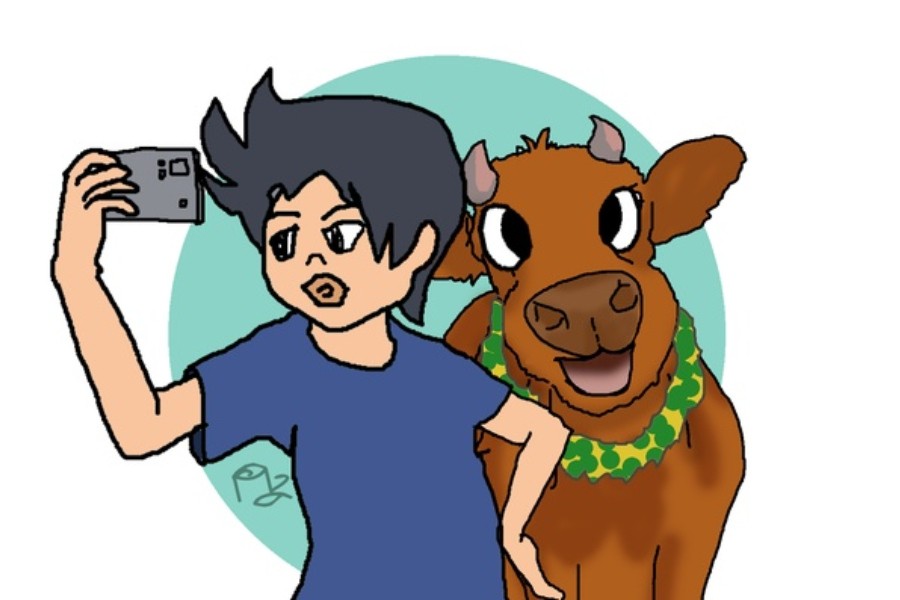Six years ago, two photos went viral on Facebook around Eid-ul-Azha.
One showed a young man leaning against the bloody body of a sacrificed Eid cow, holding its legs and smiling. Another young man stood next to him.
The other showed three young men and two children standing on the body of a sacrificed cow.
The photos spread quickly after they were posted in September 2016 and gave rise to debate, reports bdnews24.com.
While some people tried to defend the photos, most came out against them, saying they did not want to see such scenes shared on future Eid days.
But, every year around Eid-ul-Azha, social media sites fill with photos and selfies with sacrificial Eid animals. The last of these series of photos is taken, inevitably, after it is butchered. Some people have even begun sharing videos of the ritual or streaming it live.
As social media use becomes even more common, some users have started parading the animals around while hanging garlands and signboards with prices on their necks.
Islamic leaders say that Eid-ul-Azha should not be about exhibitionism or showing off.
“Pictures and videos of sacrificial animals should only be shared by necessity,” said Hafiz Maulana Ruhul Amin, khatib of the Baitul Mukarram National Mosque.
“Many people use these photos and videos as part of their business and there is nothing wrong with that. But if this is done simply to show off, it is an absolute waste. Islam does not permit this.”
“The ritual is about sacrifice and is not an exhibition. It is an act of worship. The sacrifice is done to satisfy Allah,” he said.
Maulana Fareed Uddin Masud, imam of the Sholakia Eidgah and president of the National Dani Madrasa Education Board, agrees that the Eid sacrifice is not a matter of publicity.
“Even if someone sacrifices an animal to eat meat, it shall not be accepted by Allah, he said.”
Psychologists say the desire to post Eid sacrifices on social media is a ‘violent demonstration of exhibitionism’.
Dr Mohit Kamal, a psychiatric specialist, says such demonstrations could have a negative psychological impact on other people.
“In previous years we have seen people sacrificing cows live on Facebook during Eid,” he said. “They share images of butchered animals and meat. If anyone wants to sacrifice an animal or see it, that is a matter of their personal preference. But bringing those images to social media and forcing others to see it is, in my opinion, not sanctioned by any religious or social point of view.”
“There are many non-Muslims in this social space and many animal lovers who find it cruel. People may experience psychological trauma from it.”
Dr Mohit said that publicising the prices of sacrificial animals can also give rise to issues.
“It has become common for people to tout the size and price of the sacrificial cows they bought. They don’t consider how it could lead to feelings of inferiority for their close relatives and neighbours.”
Technology experts believe that the trend is a sign of the lack of ‘mental maturity’ among social media users in the country.
“We are often suffering because we do not have the appropriate maturity to use social media properly,” Sumon Ahmed Sabir, chief strategic and technical officer of Fiber@Home, says. “We need to talk about these things. In using new technology, we must avoid its negative impact and cultivate the positive.”
“Those of us who use social media should bear in mind that people of different ages will have access to the content we upload. As such, we should be careful and avoid posting anything harmful or uncomfortable for others. Images of sacrifices are not pleasant for everyone.
There is an ‘unhealthy culture’ of people bragging about their sacrificial animals, Sabir said.
“There is no technological solution that will bring us out of this. To solve this, we must instead improve our awareness of these issues.”
Asked what steps the government is taking on this issue, Minister of Post and Telecommunications Mustafa Jabbar said: “Social media, especially Facebook, is monitored by the US. We have spoken to them. They have promised to remove any horrible photos and videos on social media.”
The minister, who is quite active on social media, said:
“I believe no horrifying images should be shared on social media. We receive many complaints about this.”
State Minister of Information and Communication Technology Zunaid Ahmed Palak also puts the impetus on social media authorities to regulate such content.
“Every platform for social communication has certain set standards, which we call community standards. The first tenet of this is self-regulation.”
But initiatives should also be taken to raise awareness, he said.
“The initiatives that the Ministry of Information and BTRC can take are about raising awareness. Our ICT Division has plans to conduct awareness campaigns on digital literacy and other issues. We could try and inform people about the need to follow community standards through that programme.”
Asked whether any legal action could be taken on the matter, the state minister said:
“There isn’t any opportunity to do anything like that from our end. It is entirely a matter of awareness.”


